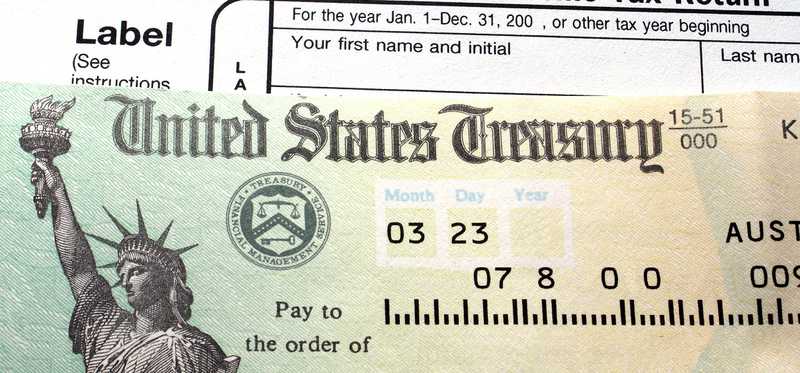11 Steps to a Million-Dollar 401(k)

11 Steps to a Million-Dollar 401(k)
Retire as a millionaire
Most Americans dream of retiring rich, but $1 million doesn't go as far as it used to. With estimates of healthcare expenses alone in retirement approaching the $300,000 mark, saving up a seven-figure nest egg is rapidly becoming the must-have target for those who are serious about their retirement savings.
Saving $1 million takes some effort, but 401(k) plans make it easier. If you follow these steps, you'll put yourself in the best possible position to be a millionaire when you retire.
ALSO READ: More Americans Are Increasing Retirement Savings, Survey Shows
Previous
Next

1. Get your other finances into shape
Before you focus on a 401(k), you should take a critical look at your financial condition and set smart priorities. If you have balances on credit cards, tackle them first by getting them paid down to avoid high finance charges. Also, make sure you have some savings outside your retirement account available for unexpected expenses. Once you've got your other financial ducks in a row, you'll be better able to concentrate on your retirement saving.
Previous
Next

2. Get your career off to a flying start -- with good benefits
Believe it or not, you can still find jobs that don't offer access to a 401(k) or other employer-sponsored retirement plan. That doesn't have to be the kiss of death for your retirement dreams, but it does make them a lot tougher to reach. Consider: The basic contribution limit for 401(k)s in 2018 is $18,500 if you're younger than 50 years old. By contrast, IRAs only let you set aside $5,500 toward your retirement.
The best jobs feature 401(k) plans where your employer adds something to your retirement savings, either through matching contributions or profit-sharing. Hold out for those good jobs, and it'll be a lot easier to retire a millionaire.Previous
Next

3. Pick the right amount to save
When you sign up for your 401(k), you'll get to choose how much of your paycheck to set aside. If your eventual target is $1 million, picking a considerable percentage like 10% is almost essential.
One thing to watch out for is if your employer tries to set your savings percentage by default. Such programs can be useful for those who don't take retirement savings very seriously, but often, the default percentage is too low to give you any reasonable hope of reaching the $1 million mark by the time you retire. Don't fall into that trap -- pick a higher percentage to keep you on track.
ALSO READ: These 2 Simple Things Can Dramatically Boost Your Retirement Savings
Previous
Next

4. Max out on free cash
If you're fortunate enough to work for a company that gives you an employer match, don't leave it on the table -- grab up as much as you can. The amount of matching varies by employer, with one common arrangement being for the company to contribute $0.50 for every $1 the worker contributes, up to a maximum worker contribution of 6% of earnings.
Having your employer add just 3% of your salary in matching contributions might not seem like that big a deal. But if you get that match year in and year out and invest it, an employer match can end up representing hundreds of thousands of dollars toward your million-dollar retirement.
Previous
Next

5. Be tax-smart with your 401(k) options
There are actually two types of 401(k)s, and the best employers give you access to both. Traditional 401(k)s let you remove your contributed savings from your taxable income, producing immediate tax savings that can help you boost your contributions even further.
Some employers also let you have access to a Roth 401(k). You don't get an immediate tax benefit with money you put toward your Roth 401(k), but later on, you get something that could be even better: tax-free withdrawals when you need them in retirement. Taking advantage of both types of 401(k)s can give you maximum flexibility in getting to your $1 million goal.
Previous
Next

6. Find the best investments available
One challenge with most 401(k) plans is that you often have to choose from less-than-ideal investments. Some of your choices can include high costs that will sap your returns.
You're better off looking to the lowest-cost investment options available in your plan. If you have access to a stock index mutual fund, it can often be the best way to maximize your return while keeping costs as low as possible. Only by investing your money well will you be able to transform your savings into the kind of wealth that will make you financially secure in retirement.
Previous
Next

7. Got a raise? Give your savings a raise too
Saving as much as you can will get you to $1 million as quickly as possible. But it can be hard to find places to save.
Fortunately, over the course of your career, you'll likely get raises from time to time. That's often the best time to increase your retirement contributions, because that way, you can still end up with a bigger paycheck while sending a portion of your raise to your retirement account. Those win-wins will do a better job of keeping you on track.
Previous
Next

8. Don't touch that nest egg!
As your 401(k) grows, it can be tempting to tap into it. Unfortunately, many employers make it relatively easy for you to raid your retirement funds, providing 401(k) loans that you can spend on anything from a home renovation to a trip to Vegas. Moreover, with more people switching jobs more frequently, you can fall into traps in handling 401(k)s with former employers.
Your 401(k) needs to keep working for you throughout your career, so taking money out of retirement accounts is always a no-no. Rolling an old 401(k) into an IRA is fine and can be a great move, but the key is to make sure you respect your retirement savings rather than diverting it toward immediate financial needs.
Previous
Next

9. Finish the race strong
Your 50s and 60s are a great time to save for retirement. Many people reach their peak earnings potential at the same time that family expenses start to decline.
The government acknowledges this by giving people a chance to catch up on contributions late in their career. Starting at age 50, you can add an extra $6,000 to your maximum 401(k) contribution amount. Adding an extra $90,000 in contributions between 50 and a typical retirement age of 65 can make a huge difference in getting you to $1 million.
Previous
Next

10. Manage your investment risk
As you get closer to your $1 million goal, you'll want to look at how your investments are performing. After a long bull market, you might get closer to $1 million more quickly than you expected, in which case you can consider replacing aggressive risky investments with more conservative alternatives. Conversely, after a market correction, putting more of your future contributions toward stocks can boost your returns. Replacing poor-performing funds can also help you preserve your retirement savings more effectively.
Previous
Next

11. Don't blow it after the finish line!
Just because your account balance says you've hit $1 million doesn't necessarily mean you'll have that much to spend in retirement. Withdrawals from traditional 401(k)s get taxed at ordinary income tax rates, so what looks like a $1 million balance can actually be worth as little as $630,000 after paying taxes.
If you make withdrawals gradually over time, you'll lessen the potential tax impact. Even so, smart savers should consider going beyond the $1 million mark if possible in order to have some extra cash to keep the IRS satisfied.
Previous
Next

Be the millionaire you want to be
Many people will never get close to seeing their 401(k)s hit the $1 million mark. But if you're smart about tackling the task step by step and remain dedicated to it, you can be one of the few success stories and earn the financial security you want in your golden years.
The Motley Fool has a disclosure policy.
Previous
Next
Invest Smarter with The Motley Fool
Join Over Half a Million Premium Members Receiving…
- New Stock Picks Each Month
- Detailed Analysis of Companies
- Model Portfolios
- Live Streaming During Market Hours
- And Much More
READ MORE
HOW THE MOTLEY FOOL CAN HELP YOU
-
Premium Investing Guidance
Market beating stocks from our award-winning service
-
The Daily Upside Newsletter
Investment news and high-quality insights delivered straight to your inbox
-
Get Started Investing
You can do it. Successful investing in just a few steps
-
Win at Retirement
Secrets and strategies for the post-work life you want.
-
Find a Broker
Find the right brokerage account for you.
-
Listen to our Podcasts
Hear our experts take on stocks, the market, and how to invest.
Premium Investing Services
Invest better with The Motley Fool. Get stock recommendations, portfolio guidance, and more from The Motley Fool's premium services.